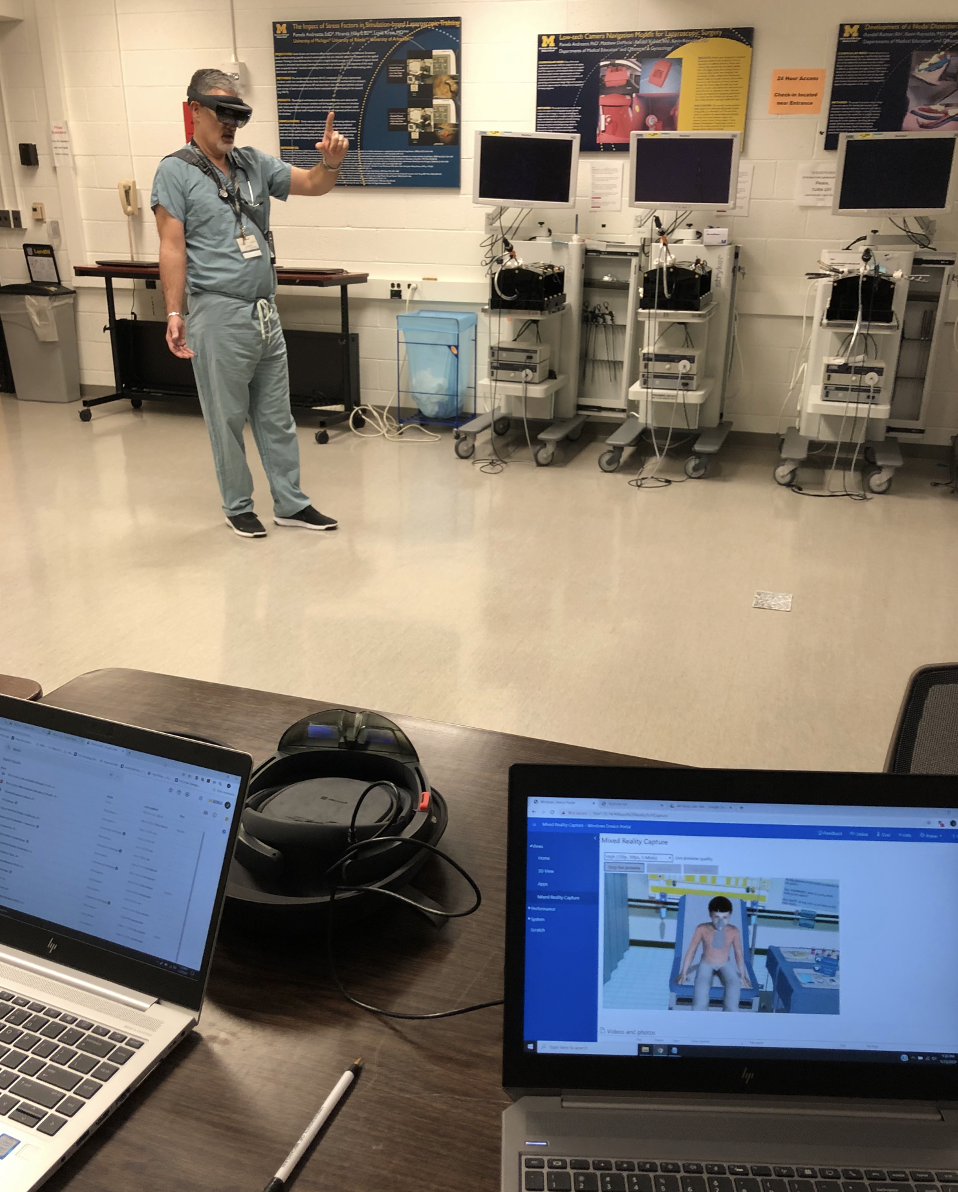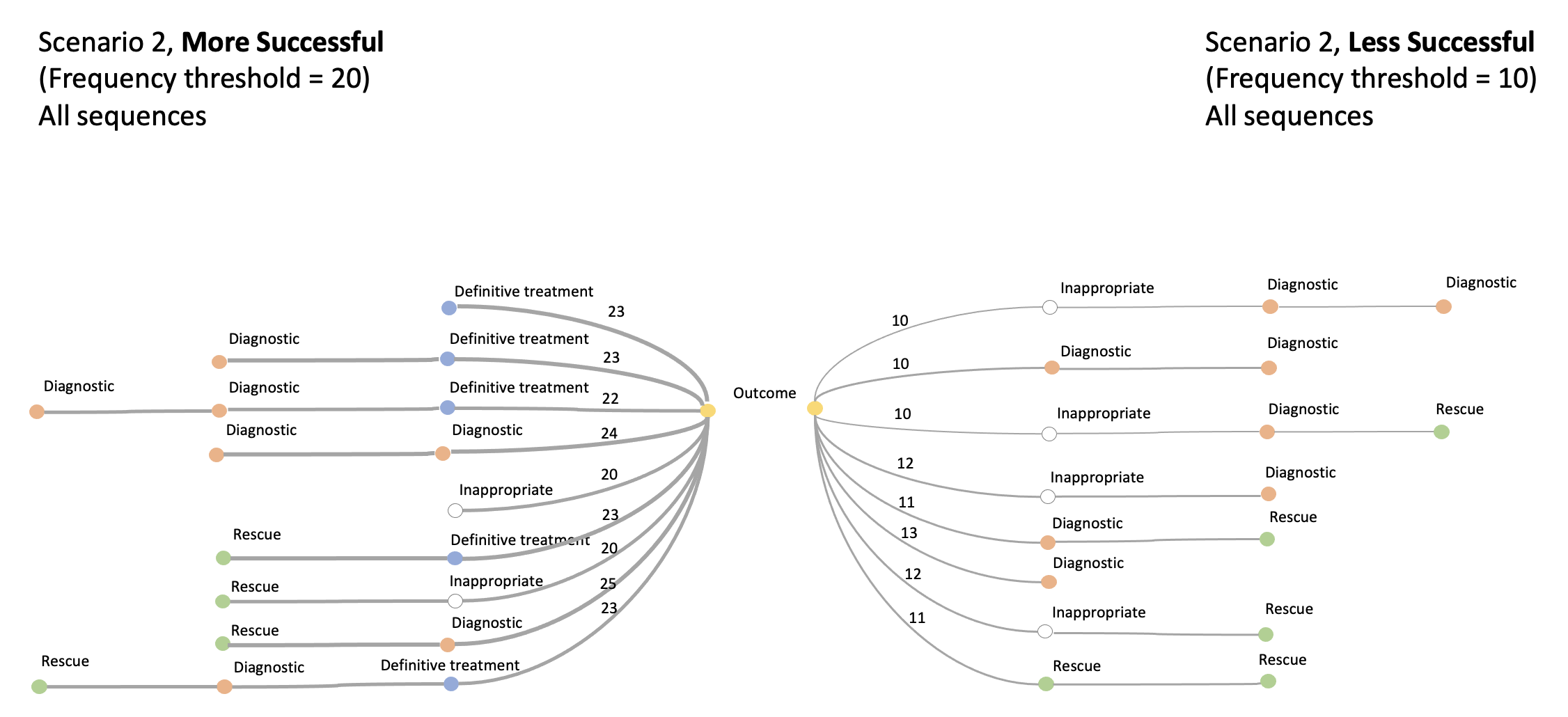Sequential Analysis in XR Clinical Simulation
Sequential Behavioral Analysis to Understand Decision-Making Patterns in Managing Pediatric Airway Emergencies in Extended Reality Simulated Scenarios
Management of critical events related to airway emergencies in children has been well-described in the literature. However, despite a number of well prescribed interventions, there is typically some variation in the exact order of steps performed during these situations, either due to clinician experience or training background. Delay in correct diagnosis and treatment may result in increased morbidity and mortality. Simulation-based instruction has been generally accepted as playing an important role in airway management training. Extended Reality (XR)-based simulation training offers unique features that facilitate collection of dynamic behavioral data and increased immersion/realism while providing opportunities for training healthcare professionals on critical events that are difficult to recreate in real life. Specifically, whereas learner assessment in conventional simulation typically evaluates global actions and performance, the virtual environment allows for the collection of discrete, nuanced, and dynamic data of processes that unfold over time and which was previously either difficult or impossible to observe during conventional simulation training.

We used sequential analysis to investigate differential patterns of clinical decision-making behaviors in managing critical pediatric airway XR scenarios. Sequential analysis, a technique which helps identify sequential patterns present in a large amount of data, has been suggested by many researchers as a means to study learners’ sequences of behaviors and transitions between them. In essence, sequential analysis helps detect whether the occurrence of one event is linked to the subsequent occurrence of another event in real time. Despite the fact that sequential studies provide correlational data, the identification of close temporal relationships between two events can be used to identify educational targets for improvement and potentially be linked to learning outcomes.

Future impact & implications: while application of sequential behavioral analysis in medical education is not a new phenomenon, its use as a means to analyze clinical decision-making in a simulated setting is quite novel. It will be important to provide evidence for this type of analysis so that in the future it may be applied to real-life situations and potentially increase patient safety. This method of teaching and assessing behaviors may be able to impact future curriculum development based on analysis of sequential behaviors and learner decision-making patterns. This study lays a foundation for using XR technologies for healthcare workers and residents as a method to train for anytime, anywhere acute-care events (mimicking the real clinical environment) and helps identify each learner’s unique needs by delivering focused, individualized feedback.
TEAM: Lauryn R. Rochlen, MD; Clinical Associate Professor; University of Michigan, Elizabeth M, Putnam, MBBS; Clinical Assistant Professor; University of Michigan, Alan R. Tait, Ph.D.; Professor Emeritus; University of Michigan, Hanxiang Du; M.S.; University of Florida.